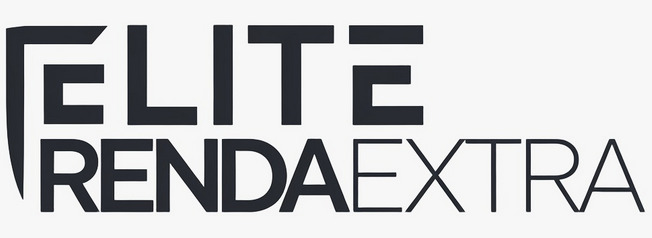Navigating the world of personal loans can often feel like a complex maze. You need funds, perhaps for an unexpected emergency, a home renovation, or to consolidate debt, but the prospect of a loan application being denied can be daunting.
The good news is that with a bit of foresight and preparation, you can significantly boost your chances of not just getting approved, but also securing favorable terms. It’s about understanding what lenders are looking for and presenting yourself as a reliable borrower.
Understand and Polish Your Credit Score
Your credit score is arguably the most critical factor lenders scrutinize when you apply for a personal loan. It’s a numerical representation of your creditworthiness, indicating how likely you are to repay borrowed money. A higher score generally translates to better approval odds and lower interest rates.
Why Your Credit Score Matters So Much
Lenders use your credit score to assess risk. A low score might suggest a history of missed payments or high debt, making you a riskier borrower. Conversely, a high score demonstrates responsible credit management. Different lenders have varying minimum credit score requirements, but aiming for a score in the “good” to “excellent” range (typically 670 and above on the FICO scale) will open more doors.
How to Check and Improve Your Score
Before you even think about applying for a loan, get a clear picture of your credit standing. You can obtain free copies of your credit reports annually from the major credit bureaus (Equifax, Experian, TransUnion) via AnnualCreditReport.com. Review these reports meticulously for any errors or inaccuracies that could be dragging your score down. If you find any, dispute them immediately.
To improve your score, consider these actions:
- Pay Bills on Time: Payment history is the most significant component of your credit score. Even a single late payment can have a negative impact.
- Reduce Credit Utilization: This is the amount of credit you’re using compared to your total available credit. Aim to keep it below 30% on each card and overall.
- Avoid Opening Too Many New Accounts: Each new credit application can result in a hard inquiry, which might slightly lower your score. Open new credit only when necessary.
- Keep Old Accounts Open: The length of your credit history also plays a role. Closing old accounts can shorten your credit history and potentially increase your credit utilization ratio.
Analyze and Optimize Your Debt-to-Income Ratio (DTI)
Beyond your credit score, lenders pay close attention to your debt-to-income ratio (DTI). This metric compares your total monthly debt payments to your gross monthly income, expressed as a percentage. It helps lenders gauge your ability to manage monthly payments and repay new debt.
What Constitutes DTI?
Your DTI calculation typically includes:
- Rent or mortgage payments
- Credit card minimum payments
- Auto loan payments
- Student loan payments
- Other loan payments (including existing personal loans)
- Alimony or child support payments
Lenders generally prefer a DTI below 43%, with many favoring DTIs under 36% for personal loans. A lower DTI indicates that you have a healthy balance between debt and income, making you a less risky prospect.
Strategies to Lower Your DTI
If your DTI is on the higher side, consider these steps before applying for a loan:
- Increase Your Income: Easier said than done, but exploring side hustles, asking for a raise, or finding a higher-paying job can significantly impact your DTI.
- Reduce Your Debt: Focus on paying down existing debts, especially high-interest credit cards or smaller loans you can eliminate quickly.
- Avoid Taking on New Debt: Refrain from making large purchases on credit or opening new credit lines while you’re trying to improve your DTI for a loan application.
For example, if your gross monthly income is $5,000 and your total monthly debt payments are $1,500, your DTI is ($1,500 / $5,000) * 100 = 30%. This would generally be viewed favorably by lenders.
Shop Around and Compare Lender Offers
Not all lenders are created equal, and their loan offers can vary significantly. Don’t make the mistake of applying to the first lender you find. Taking the time to shop around can save you a considerable amount of money over the life of the loan.
Different Types of Lenders
Personal loans are offered by various financial institutions:
- Traditional Banks: Often have established relationships with customers but might have stricter lending criteria.
- Credit Unions: Member-owned institutions that may offer lower interest rates and more flexible terms, especially if you’re a member.
- Online Lenders: Have gained popularity for their quick application processes and often competitive rates. They may also be more lenient with credit score requirements than traditional banks.
Key Factors to Compare
When evaluating loan offers, look beyond just the interest rate. Consider the following:
| Factor | Description | Why it Matters |
|---|---|---|
| Annual Percentage Rate (APR) | The total cost of borrowing, including interest and some fees, expressed as an annual percentage. | Provides a more accurate comparison of loan costs than interest rate alone. |
| Fees | Origination fees, late payment fees, prepayment penalties. | Can significantly add to the overall cost of the loan. Ask for a full fee schedule. |
| Loan Term | The length of time you have to repay the loan (e.g., 3, 5, or 7 years). | Longer terms mean lower monthly payments but more interest paid overall. Shorter terms mean higher payments but less total interest. |
| Repayment Flexibility | Options for making payments, grace periods, ability to change payment dates. | Can make managing your loan easier if your financial situation changes. |
Many online lenders and comparison websites allow you to pre-qualify for loans. This process typically involves a soft credit check, which doesn’t impact your credit score, and can give you an idea of the rates and terms you might receive.
Prepare Your Documentation Thoroughly
A smooth and swift loan application process often hinges on having all your necessary documentation ready and accurate. Lenders require this information to verify your identity, income, and financial stability.
Commonly Required Documents
While requirements can vary slightly between lenders, be prepared to provide:
- Proof of Identity: Government-issued ID like a driver’s license or passport.
- Proof of Address: Utility bills, lease agreement, or mortgage statement.
- Proof of Income: Recent pay stubs, W-2 forms, tax returns (especially if self-employed), or bank statements showing regular deposits.
- Employment Verification: Lenders may contact your employer to confirm your employment status and income.
- Bank Account Information: For disbursing the loan and potentially for setting up automatic payments.
Having these documents organized and readily available can prevent delays and demonstrate to the lender that you are serious and prepared. Ensure all information is current and accurate to avoid any discrepancies that could lead to rejection.
Borrow Only What You Need and Can Afford
It can be tempting to apply for a larger loan amount than you strictly need, especially if you’re approved for it. However, borrowing responsibly is crucial for your long-term financial health.
The Risks of Over-Borrowing
Taking on more debt than necessary means higher monthly payments and more interest paid over the life of the loan. This can strain your budget and make it harder to meet other financial obligations or save for future goals. Before applying, create a detailed budget to determine exactly how much you need and, more importantly, how much you can comfortably afford to repay each month without undue stress.
Clearly Define Your Loan Purpose
Lenders will often ask for the purpose of the loan. While “personal use” is a common reason, being specific (e.g., “debt consolidation,” “home improvement,” “medical expenses”) can sometimes work in your favor, as some lenders may have slightly different criteria or even specialized loan products for certain purposes. Honesty and clarity about why you need the funds can build trust. For instance, if you’re seeking a loan for debt consolidation, highlight how it will improve your financial situation by lowering overall interest payments.
Final Thoughts on Securing Your Loan
Getting a personal loan approved doesn’t have to be an uphill battle. By proactively managing your credit, understanding your financial ratios, diligently comparing offers, preparing your paperwork, and borrowing responsibly, you can significantly enhance your chances of success. Each of these steps contributes to presenting you as a low-risk, reliable borrower to potential lenders.
Remember that financial preparedness is key. Take the time to understand your financial landscape and what lenders are looking for. For more information and resources on managing your finances and understanding credit, you can explore comprehensive guides. A well-prepared applicant is a confident applicant, and these smart tips for getting your personal loan approved can make all the difference in achieving your financial goals.



